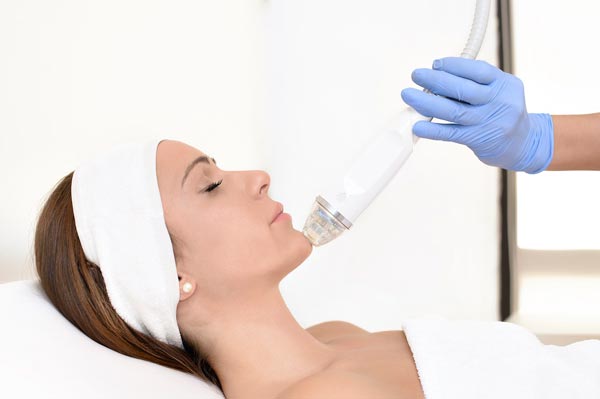Fractional Needle Bipolar Radiofrequency
Fractional needle bipolar radiofrequency devices provide dermal coagulation with the heat effect of the radiofrequency generated in the insulated needle tips while making small holes in the epidermis with the micro needles at the ends. Only the tip 0.3 mm of the needles are not insulated. In this way, heat is generated only at the tip, that is, in the dermis. In this way, the epidermis, the upper surface of the skin, is protected.
Fractional needle bipolar radiofrequency devices increase collagen and elastic tissue in the dermis without damaging the epidermis. Thus, it helps to reduce wrinkles, long-term tightening of the skin and reduction of scars. The pain is felt less in devices where the needles enter the epidermis sequentially rather than simultaneously. An anaesthetic cream is applied before the application to reduce the pain. The length of the needles varies between 0.5 and 3.5 mm depending on the depth to be descended.
The redness and swelling that will occur after the application lasts between 2-4 days depending on the energy applied. Since there is no crusting as in fractional lasers, the person can easily continue his/her social life. It is possible to apply in every season. It is also easily applied to dark-skinned people.
It is applied between 2-4 sessions with 15 days or 1 month intervals depending on the condition to be treated. Positive effects begin to be observed approximately one month after the application. Skin firmness increases, facial oval is recovered, wrinkles are reduced, brightness is increased, and spots are reduced. Positive results are also obtained in applications for stretch marks, acne and surgical scars. Fractional needle bipolar radiofrequency also causes shrinkage in the sebaceous glands, thereby reducing skin oiliness and reducing pores and acne.
Things to Know Before Application
– If you have herpes infection (herpes) from time to time, this application may trigger herpes. Therefore, you should get advice from your doctor before the application.
– If you have acne (acne) problem, your acne may increase in the first 1 week due to oedema after the application. A suitable antibiotic should be started to prevent this.
– Depending on the severity of the treatment applied and the sensitivity of the skin, redness and oedema may last between 2-4 days after the application.
Things to Know After Application
– There should be no water contact with the treated area for the first 24 hours after the application. On the 2nd day, it can be contacted with water, but the water should not be hot.
– After the application, a cream that will support and moisturise the skin well should be used.
– Sunscreen must be used after the application.
Who Cannot Be Applied or Risky?
– It cannot be applied to people with suspected pregnancy and pregnant women.
– Cancer patients, people receiving radio therapy and chemotherapy cannot be applied.
– Patients with a pacemaker cannot be applied.
– Epilepsy (epilepsy) patients cannot be applied.
– In cases of acute infection, the application cannot be performed.

